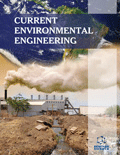Abstract
Objective: The main focus in the current work is to investigate how diverse heating systems and their locations influence the indoor thermal environment in an exhaust- ventilated room.
Methods: Four systems for heating the room were used in the current study, in which, heat was transferred by convection and radiation. The four systems were: wall and floor heating at low temperatures, Medium Temperature Radiator (M.T. radiator) heating and High Temperature Radiator (H.T. radiator). Computational Fluid Dynamics (CFD) simulation was used to investigate indoor temperature, vertical air temperature gradient and thermal comfort for each case. The ventilation rate was set to be 6 air changes per hour (ACH) entering the room through a vent over the window.
Results: The findings from the current work were that the low temperature heating systems had better temperature distributions with lower vertical Air Temperature Differences compared to high and medium temperature radiator systems.
Conclusion: The Predicted Mean Vote (PMV) and the predicted percentage of dissatisfied (PPD) based on Fanger’s model were calculated for all cases, and were found to be in the recommended ranges.
Keywords: Air flow, CFD, convection, heating, radiation, room, thermal comfort.
Graphical Abstract
 15
15 2
2


